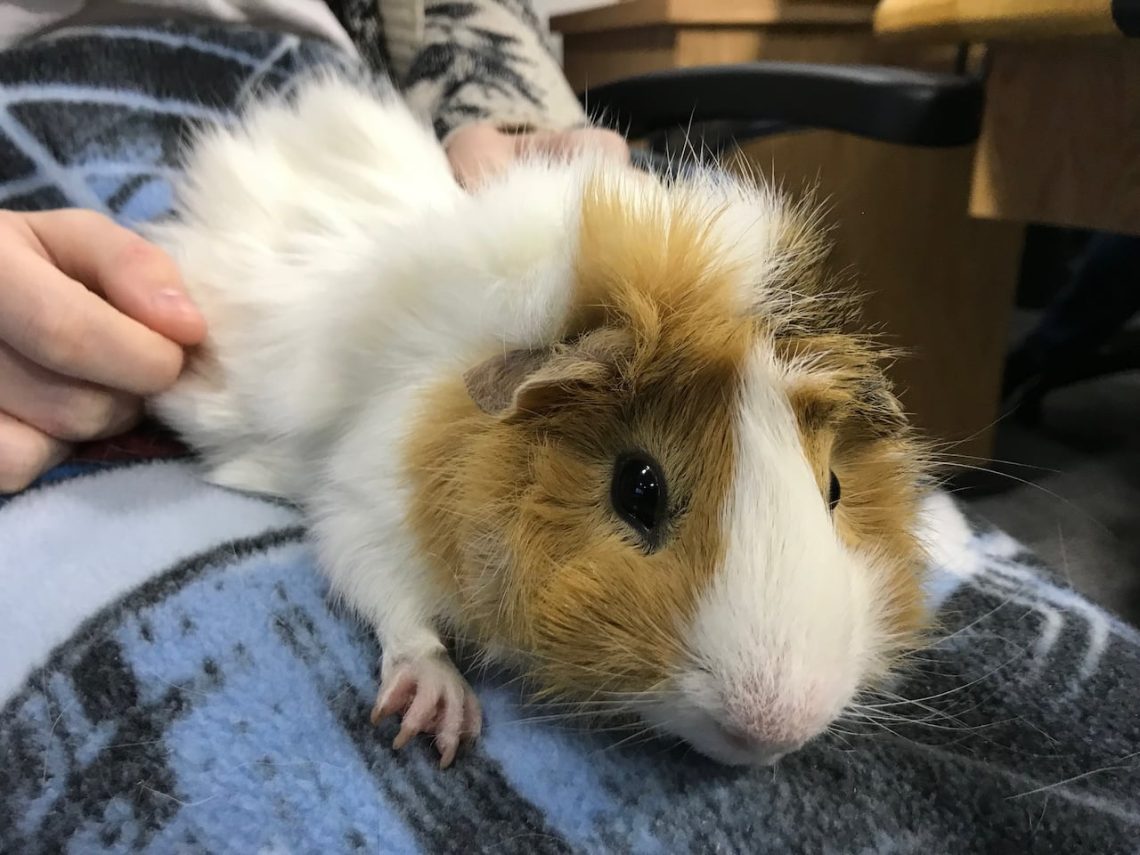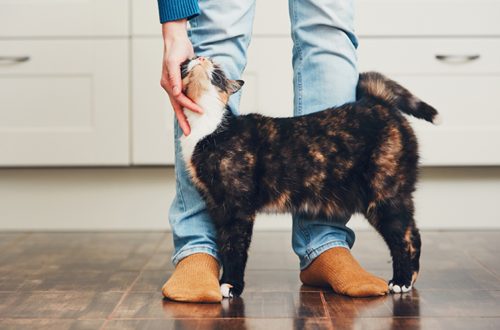
Sense organs of guinea pigs
Consider the features of the sense organs of guinea pigs
Consider the features of the sense organs of guinea pigs
The cochlea of the inner ear in a guinea pig has four turns, while in mice and rats, even in humans, there are only two and a half. Thus, guinea pigs have relatively more room for auditory cells, and as a result, they have particularly good hearing. If a person can perceive sounds from 20 Hz (child) to 000 Hz (adult), then guinea pigs perceive sounds up to 15 Hz.
The cochlea of the inner ear in a guinea pig has four turns, while in mice and rats, even in humans, there are only two and a half. Thus, guinea pigs have relatively more room for auditory cells, and as a result, they have particularly good hearing. If a person can perceive sounds from 20 Hz (child) to 000 Hz (adult), then guinea pigs perceive sounds up to 15 Hz.
The sense of smell of guinea pigs is focused primarily on contacts with each other and on sexual behavioral norms.
For example, their urine plays an important role in labeling. So, males ready for mating inject urine, females that are not in heat, along with hostile behavior, use smell to show the male that they are not ready for mating.
Guinea pigs rely primarily on their sense of smell.
Guinea pigs in a social community recognize each other by smell. This applies not least to the loss after re-identification of young animals.
At the same time, it was noted that this group-specific identification, after repetition for several days, also disappears in adult animals. Marking a territory with a secret, as well as urine, explains why guinea pigs feel at ease in their familiar environment and very restless and insecure in an unfamiliar one. This is then manifested in their timid behavior.
Compared to humans, guinea pigs have a heightened sense of smell. It is about a thousand times more developed than in humans. So, they perceive a variety of odors that people do not notice at all, and therefore can be excited for various reasons.
Guinea pigs are used to living and playing in small groups.
Similarly, during meals, the sense of smell of guinea pigs plays a very important role in distinguishing between healthy and unhealthy food. The same applies to the identification of various persons.
The sense of smell of guinea pigs is focused primarily on contacts with each other and on sexual behavioral norms.
For example, their urine plays an important role in labeling. So, males ready for mating inject urine, females that are not in heat, along with hostile behavior, use smell to show the male that they are not ready for mating.
Guinea pigs rely primarily on their sense of smell.
Guinea pigs in a social community recognize each other by smell. This applies not least to the loss after re-identification of young animals.
At the same time, it was noted that this group-specific identification, after repetition for several days, also disappears in adult animals. Marking a territory with a secret, as well as urine, explains why guinea pigs feel at ease in their familiar environment and very restless and insecure in an unfamiliar one. This is then manifested in their timid behavior.
Compared to humans, guinea pigs have a heightened sense of smell. It is about a thousand times more developed than in humans. So, they perceive a variety of odors that people do not notice at all, and therefore can be excited for various reasons.
Guinea pigs are used to living and playing in small groups.
Similarly, during meals, the sense of smell of guinea pigs plays a very important role in distinguishing between healthy and unhealthy food. The same applies to the identification of various persons.
Due to the arrangement of their eyes, guinea pigs are able to look both forward and sideways without turning their heads. Thus, they have a relatively wide field of view, which is especially important for protection against their natural enemies in the wild. Guinea pigs can at least distinguish between red, yellow, green and blue. It also plays a role in food intake.
Due to the arrangement of their eyes, guinea pigs are able to look both forward and sideways without turning their heads. Thus, they have a relatively wide field of view, which is especially important for protection against their natural enemies in the wild. Guinea pigs can at least distinguish between red, yellow, green and blue. It also plays a role in food intake.
The tactile hairs around the mouth and nose help guinea pigs to determine in the dark whether it is possible to penetrate this opening or whether there is an obstacle in the way.
The tactile hairs around the mouth and nose help guinea pigs to determine in the dark whether it is possible to penetrate this opening or whether there is an obstacle in the way.
When guinea pigs’ sense of smell does not allow them to unambiguously identify or approve certain types of food, they call on their taste perception to help. In this case, along with instinctively determined reactions, previously accumulated experience plays a role, for example, in distinguishing between good and bad food.
This means that guinea pigs prefer sweet food to salty food. However, they do not refuse bitter. And among guinea pigs there are individual taste preferences, which are manifested in the fact that individuals often prefer completely different foods as treats.
When guinea pigs’ sense of smell does not allow them to unambiguously identify or approve certain types of food, they call on their taste perception to help. In this case, along with instinctively determined reactions, previously accumulated experience plays a role, for example, in distinguishing between good and bad food.
This means that guinea pigs prefer sweet food to salty food. However, they do not refuse bitter. And among guinea pigs there are individual taste preferences, which are manifested in the fact that individuals often prefer completely different foods as treats.
Unlike a number of other rodents such as hamsters, mice, rats, chinchillas, etc., as well as rabbits, guinea pigs have an extensive repertoire of vocalizations.
It ranges from murmuring as an expression of contentment, cooing as a sign of establishing contact between themselves, to snapping teeth as an unambiguous loud acoustic warning of the upcoming struggle for the supremacy of adult males.
Guinea pigs have a varied and rich sound repertoire.
Young guinea pigs emit a thin squeak that calls on the mother or, when kept in a group, other females to take care of the baby. At the same time, mothers respond to these calls for help as their cubs grow up, that is, from about two weeks of age, less and less, and in this way accustom their offspring to independence.
Adult guinea pigs also sometimes make sounds that are well understood by people, expressing fear. When they are issued by one of the members of the community, the whole group often runs in single file towards the wall or hides under some kind of ledge, since in the wild one can find relatively reliable shelter, especially from birds of prey.
But there are also situations when guinea pigs, out of fear, fall into a kind of tetanus – a kind of behavioral norm that plays a protective role.
If the guinea pig is taken awkwardly, causing her pain, she also emits a characteristic sharp squeak. (See also Body Language and Sounds and Learn to Understand Guinea Pigs)
Unlike a number of other rodents such as hamsters, mice, rats, chinchillas, etc., as well as rabbits, guinea pigs have an extensive repertoire of vocalizations.
It ranges from murmuring as an expression of contentment, cooing as a sign of establishing contact between themselves, to snapping teeth as an unambiguous loud acoustic warning of the upcoming struggle for the supremacy of adult males.
Guinea pigs have a varied and rich sound repertoire.
Young guinea pigs emit a thin squeak that calls on the mother or, when kept in a group, other females to take care of the baby. At the same time, mothers respond to these calls for help as their cubs grow up, that is, from about two weeks of age, less and less, and in this way accustom their offspring to independence.
Adult guinea pigs also sometimes make sounds that are well understood by people, expressing fear. When they are issued by one of the members of the community, the whole group often runs in single file towards the wall or hides under some kind of ledge, since in the wild one can find relatively reliable shelter, especially from birds of prey.
But there are also situations when guinea pigs, out of fear, fall into a kind of tetanus – a kind of behavioral norm that plays a protective role.
If the guinea pig is taken awkwardly, causing her pain, she also emits a characteristic sharp squeak. (See also Body Language and Sounds and Learn to Understand Guinea Pigs)
Guinea pigs can learn to respond to the sound of their name, as well as certain calls and whistles. At the same time, it is important to first patiently accustom one or more guinea pigs to yourself, that is, so that naturally shy animals begin to at least trust you and lose their timidity.
Hasty sudden movements, loud noises, etc. can instantly nullify the progress made over days of effort. (See Guinea pig training for details on guinea pig training.)
Guinea pigs can learn to respond to the sound of their name, as well as certain calls and whistles. At the same time, it is important to first patiently accustom one or more guinea pigs to yourself, that is, so that naturally shy animals begin to at least trust you and lose their timidity.
Hasty sudden movements, loud noises, etc. can instantly nullify the progress made over days of effort. (See Guinea pig training for details on guinea pig training.)





